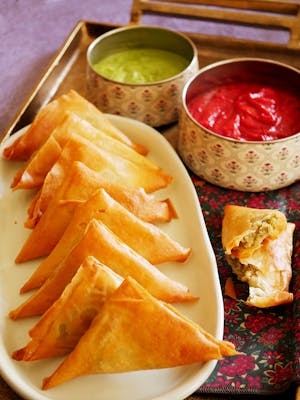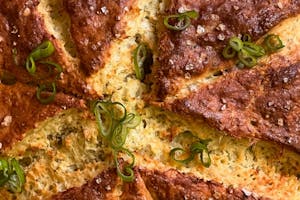Samosas are not just Indian!
Samosas are not just Indian!
For people around the world, Samosa is synonymous with Indian cuisine. It is not only the most popular Indian snack, but is one of the most relished food that Indians eat for breakfast, or as a tea time snack. But, do you know that samosa is equally famous as an entrée and a snack in Southeastern and Western Asia, Africa, and the Mediterranean region?
Without a doubt, many of you must have tried (or relished) it at least once in your life. Typically, samosa is a triangular-shaped, deep-fried, dough-crust filled with spiced potatoes. It is commonly available in its spiced savory avatar, but in this world of innovation, you can even get it in the sweet form, including chocolate samosa and meetha samosa.
Origin of Samosa
The earliest mention of samosa dates back to the 9th century in a poem written by a Persian poet. After that, a few Arab cookery books from the 10th to 13th century gives out its recipe. The samosa was also a prevalent dish in Iran until the 16th century, but its popularity gradually faded by the 20th century. Back in those days, samosa was referred to as sanbusaj, sanbusak, sanbusaq, sanbusaj, sanbosag, sambusas, samsa, samushak, or sambusak.
It was during the 13th or 14th century that the Indian subcontinent was first introduced to samsa, as it was called popularly back in those days, by the Central Asian traders. Also, during those days, samosa had a filling of meat and onion, and it was prepared in ghee. Ever since then, several historical documents talk about the evolution of samosa to its current form.
What comprises a Samosa?
Samosa consists of a crispy outer dough shell that is stuffed with any filling of your choice.
To prepare it, just roll a flour-based dough into thin sheets. Now, fold the dough into a cone by sealing the edges very nicely with some water. Fill this dough cone with a spiced potato and peas filling (most commonly used), or any filling of your choice, and then seal its ends well so that the mixture doesn’t come out. Deep-fry the samosas on low flame, until the dough turns evenly into light brown. Serve hot and crispy samosa with green chutney or sweet tamarind chutney!
Apart from getting the perfect dough, you must choose the utensil carefully in which you will cook the filling and fry samosas. An improper appliance might result in too tough, burnt, or even raw samosa dough crust. You can seek help from this guide that talks about the best cookware for the gas stove, to save your time and get the desired information to find the cookware of your choice easily, so you could prepare your perfect samosas.
Its significance
In Indian, samosa is the comfort food for people across all sections of society. In some parts of India, particularly Northern India, people enjoy samosa for breakfast with aloo ki sabzi (potato curry) and as a hearty tea-time snack.
Talking about the rest of the world, given the popularity of Indian cuisine, it is quite common to find it in many variations at street vendors to high-end restaurants. The fancier the place, the more exclusive it’s filling will get!
Variations of Samosa
- In India, this crispy fried snack with potato-based filling goes by the name of samosa. In eastern parts of India, it is known as shingadas, in Goa as chamucas, and in Hyderabad as lukhmi, and it has a meat-based filling.
- In Bangladesh, it is known as shingara, somosa, or somucha.
- In Nepal, singadas and samosa is a popular way to address it.
- In Pakistan, samosa is sold with lamb, chicken, or beef filling. You can also enjoy samosa chaat and sweet samosa here.
- In the Maldives, it is known as bajiyaa and has a fish or tuna filling.
- People in Burma call samosa as samusas.
- In Indonesia, you can find some preparations that are quite similar to samosas, such as pastel, epok-epok, and panada.
- In the African continent, samosa is referred to as sambusas (in Swahili coast), sambuus (in Somalia and Djibouti), samosas (in South Africa), and fataya (West Africa).
- In Arab countries, samosa is commonly addressed as sambousek, in Iran as sambuseh, and in Israel as sambusaq.
- In Brazil, it is known as pasteis or empadas.
With so much information about Samosa, we are sure that you are badly craving one right now as well… So, go ahead and try making some yourself at home!
Thanks to Ligia Lugo for this article. Catch up with Ligia on her socials or beautiful recipe website;
facebook.com/thedaringkitchen.com











